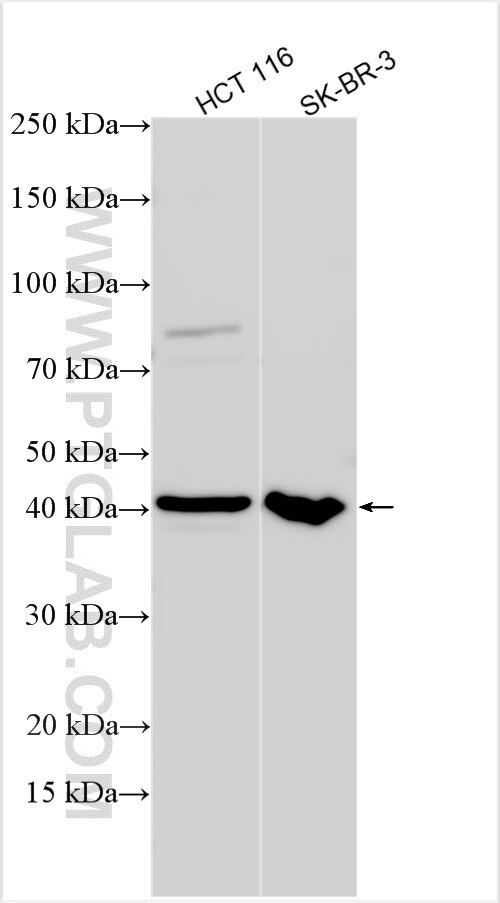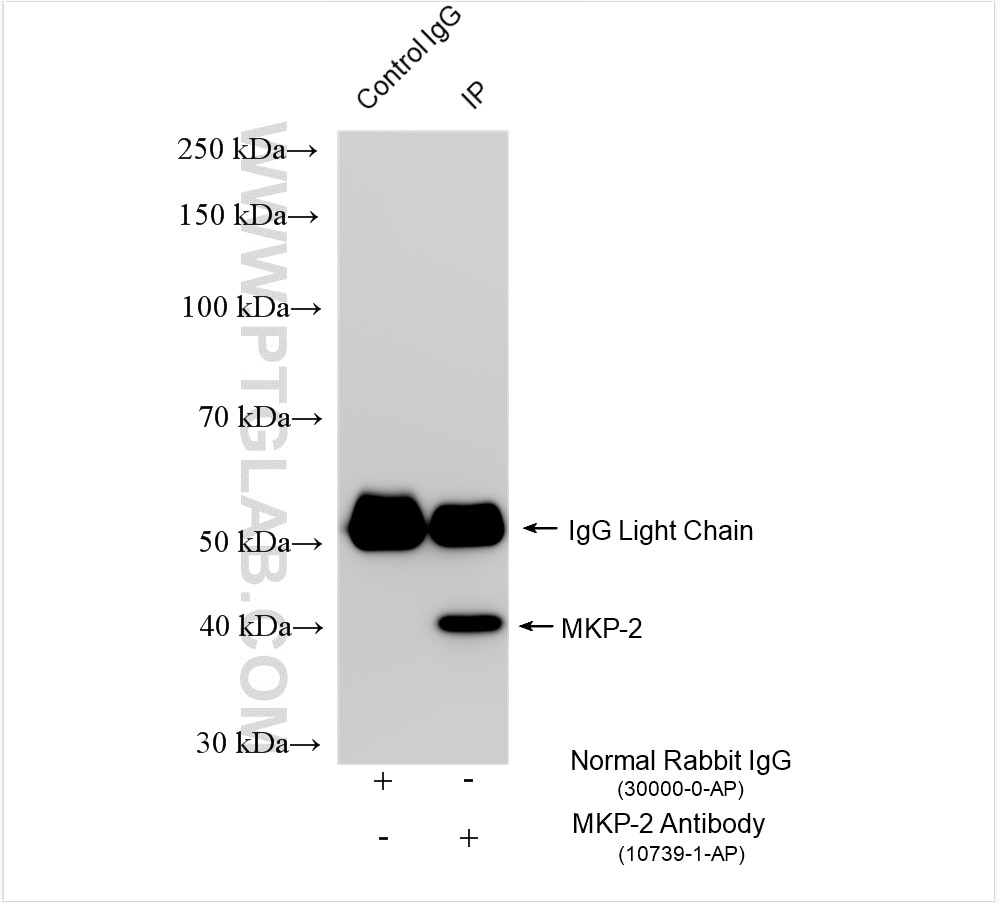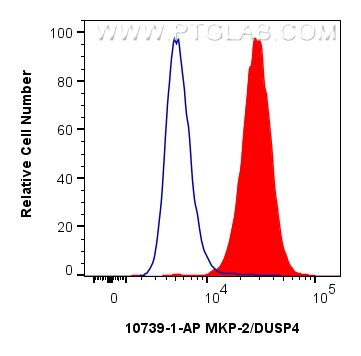- Phare
- Validé par KD/KO
Anticorps Polyclonal de lapin anti-MKP-2/DUSP4
MKP-2/DUSP4 Polyclonal Antibody for WB, IP, ELISA
Hôte / Isotype
Lapin / IgG
Réactivité testée
Humain, souris
Applications
WB, IHC, IP, ELISA
Conjugaison
Non conjugué
N° de cat : 10739-1-AP
Synonymes
Galerie de données de validation
Applications testées
| Résultats positifs en WB | cellules HCT 116, SK-BR-3 cells |
| Résultats positifs en IP | cellules MDA-MB-231, |
| Résultats positifs en FC (Intra) | cellules MDA-MB-231, |
Dilution recommandée
| Application | Dilution |
|---|---|
| Western Blot (WB) | WB : 1:1000-1:4000 |
| Immunoprécipitation (IP) | IP : 0.5-4.0 ug for 1.0-3.0 mg of total protein lysate |
| Flow Cytometry (FC) (INTRA) | FC (INTRA) : 0.25 ug per 10^6 cells in a 100 µl suspension |
| It is recommended that this reagent should be titrated in each testing system to obtain optimal results. | |
| Sample-dependent, check data in validation data gallery | |
Applications publiées
| KD/KO | See 1 publications below |
| WB | See 3 publications below |
| IHC | See 1 publications below |
Informations sur le produit
10739-1-AP cible MKP-2/DUSP4 dans les applications de WB, IHC, IP, ELISA et montre une réactivité avec des échantillons Humain, souris
| Réactivité | Humain, souris |
| Réactivité citée | Humain, souris |
| Hôte / Isotype | Lapin / IgG |
| Clonalité | Polyclonal |
| Type | Anticorps |
| Immunogène | MKP-2/DUSP4 Protéine recombinante Ag1206 |
| Nom complet | dual specificity phosphatase 4 |
| Masse moléculaire calculée | 43 kDa |
| Poids moléculaire observé | 40-43 kDa |
| Numéro d’acquisition GenBank | BC014565 |
| Symbole du gène | DUSP4 |
| Identification du gène (NCBI) | 1846 |
| Conjugaison | Non conjugué |
| Forme | Liquide |
| Méthode de purification | Purification par affinité contre l'antigène |
| Tampon de stockage | PBS with 0.02% sodium azide and 50% glycerol |
| Conditions de stockage | Stocker à -20°C. Stable pendant un an après l'expédition. L'aliquotage n'est pas nécessaire pour le stockage à -20oC Les 20ul contiennent 0,1% de BSA. |
Informations générales
DUSP4, also named as MKP-2, is a member of the mitogen-activated protein (MAP) kinase phosphatase family which has been suggested to play an important role in the feedback control of MAP kinase-mediated gene expression. DUSP4 preferentially inactivates ERK1, ERK2 and JNK, is expressed in a variety of tissues, and is localized in the nucleus.
Protocole
| Product Specific Protocols | |
|---|---|
| WB protocol for MKP-2/DUSP4 antibody 10739-1-AP | Download protocol |
| IP protocol for MKP-2/DUSP4 antibody 10739-1-AP | Download protocol |
| Standard Protocols | |
|---|---|
| Click here to view our Standard Protocols |
Publications
| Species | Application | Title |
|---|---|---|
J Clin Invest Compound haploinsufficiency of Dok2 and Dusp4 promotes lung tumorigenesis.
| ||
Cell Death Discov NR4A1 enhances MKP7 expression to diminish JNK activation induced by ROS or ER-stress in pancreatic β cells for surviving. | ||




